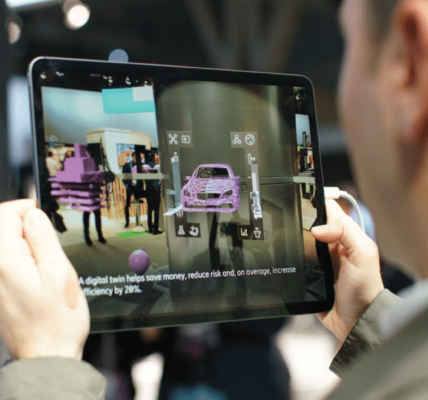Without doubt, the most intriguing is Freefly Systems’ MŌVI, which cinematographer Vincent Laforet is calling “a gamechanger”. Taking a completely different approach to the industry-standard Steadicam, it is a handheld digital 3-axis gyro-stabilised gimbal that can be operated solo, or with a second remote operator. The M10 model launched at NAB is designed for camera systems that weigh up to 10lbs (4.5kg), such as RED Epic, Canon C100, C300, C500 and HDSLRs, complete with lenses, follow focus etc. An MR model for RC Helicopters, was also announced. Priced at $14,995 each, both models are available for pre-order with a US$2500 deposit. Freefly are also developing a MŌVI M20 model for larger cameras, such as the Arri Alexa. An M5 model (for cameras up to 5lbs), ideal for DSLR shooters, is also on the way, with a proposed price of around US$7500. Watch the video below to see it in action.
For filmmakers on an even tighter budget looking to get impressive ariel shots, DJI Innovations were showing their new Zenmuse gimbal that fits their £500 Phantom RC quadcopters and designed for use with the ubiquitous GoPro Hero cameras. The gimbals are available in two or three-axis versions. DJI also announced the larger, more robust Zenmuse Evo for cameras such as the Lumix GH3. They also revealed a Phantom with a built-in camera that can take 14MP stills and 1080p video, and can be operated from an iPhone.
For DSLR filmmakers, capturing decent audio has always been an issue, especially for solo shooters. Røde has some excellent mics designed to work with DSLRs but are hindered by the camera’s inbuilt pre-amps. However, for those looking for a solution that doesn’t involve a fully-fledged field recorder have had to rely on handheld recorders such as the Zoom H4n or Tascam‘s DR-100mkII and it’s little brother DR-40. All great recorders with XLR inputs as well as onboard stereo mics, but primarily designed for musicians, with a form factor that didn’t make them easy to use when shooting solo. With that in mind, Tascam have released the DR-60D, specifically designed for DSLR filmmakers and videographers.
This new four-track solid-state recorder utilises TASCAM’s decades of audio recording experience and features high-grade HDDA pre-amps, legendary AD converters, and a durable but lightweight structure and shape. The device will fit under any camera or into any rig, and record up to 96kHz/24-bit high-quality audio straight to SD/SDHC media. Filmmakers have at their disposal two 1/4″-XLR Locking Combo MIC/LINE Inputs, 3.5mm Stereo MIC Input, Camera In, Camera Out, Line Out and Headphone Out. Both 1/4″-XLR Combo Inputs supply +48V Phantom Power and the 3.5mm Input supplies Plug-In Power for microphones requiring a bias voltage. It also has a slate tone generator amongst its many professional-level features The DR-60D is incredibly easy to use, employing TASCAM’s very popular user interface and external controls for every major operation. The body structure, soft-touch keys and dials are designed specifically to help eliminate handling noise. The multiple record modes include, 4-Channel Record, Auto Record and TASCAM’s Dual Record “Safety Track” Mode make the DR-60D one of the most versatile recorders on the market.
Most importantly, this new recorder features a top-quality crystal to ensure frame-rate accuracy for what Tascam claim to be up to 12 hours of recording. The lack of frame-rate accuracy is one of the down sides of the existing music-centric handheld devices. This is a huge advantage and more than compensates for the DR-60D’s lack of built-in mics. At US$350 it represents excellent value for money.













